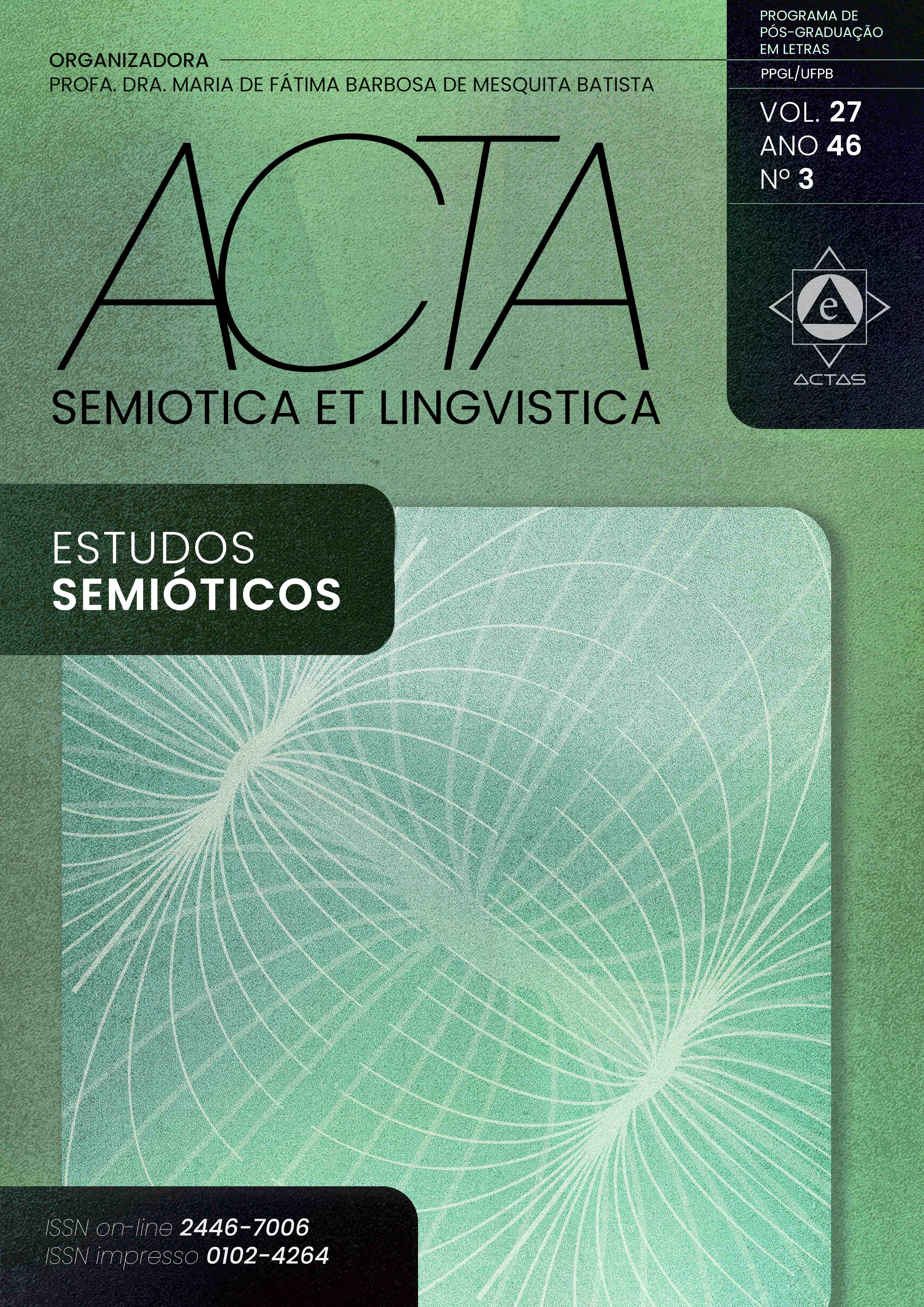FROM ANTHROPIC ZONES TO ANTHROPIC LEVELS
DOI:
https://doi.org/10.22478/ufpb.2446-7006.46v27n3.64719Resumo
We will first present our interpretation of François Rastier’s theory of anthropic zones and discuss how to use it. Next, extending François Rastier’s theory on the three levels of social practices – phenophysical, semiotic, and representational – we will integrate
the concepts of anthropic zones and levels of social practices into a larger whole that we describe as a system of “anthropic levels”, that is to say, ontological levels in which human beings exist and move. Extending Rastier’s distinction between the phenophysical (the world as we perceive it) and, implicitly, the noumenophysical (the world as it is in itself), we will apply the pheno-/noumeno- distinction to all the major levels and their subdivisions. We will, of course, discuss whether the noumeno- dimension exists. Different reductions (whether justified or unjustified) are possible between levels of a higher or lower order, and
between levels of the same order. For example, to take the example of the semiotic level: the semiotic can be reduced to the physical (signifiers would then be physical stimuli) or to the representational (signifieds would then be mental images); the physical can be reduced to the semiotic (e.g., in Greimas’s semiotics of the natural world), and the cognitive to the semiotic (according to the cognitive semiotics of Groupe μ). To give another example, in some theories (e.g., Berkeley’s solipsism and the Buddhist principle of cittamātra), the physical is reduced to the cognitive: the mind creates the world — thought solidified — whether it does so at every moment or once and for all.
Downloads
Referências
FONTANILLE, Jacques, “Le spirituel entre immanence et transcendance. La spiritualitéécologique,” in Louis Hébert, Étienne Pouliot, Éric Trudel,and George Vasilakis (eds.), Sens de la transcendance. Études sur la spiritualité, Paris: Classiques Garnier, forthcoming.
GROUPE μ, Principia semiotica. Aux sources du sens. n.a.: Nouvelles impresssions, 2015.
GROUPE μ, Rhétorique de la poésie: lecture linéaire, lecture tabulaire. Paris: Le Seuil, 1990 [1977, Brussels: Complexe].
HÉBERT, Louis, Cours de sémiotique. Paris: Classiques Garnier, 2020.
RASTIER, François, “De la signification au sens.Pour une sémiotique sans ontologie.”Texto!,June- September 2003, http://www.revue-texto.net/Inedits/Rastier/Rastier_Semiotique-ontologie.html, accessed July 20, 2021.
RASTIER, François, Faire sens. Paris: Classiques Garnier, 2018.
Downloads
Publicado
Edição
Seção
Licença
Declaração de Direito Autoral
Os artigos submetidos a revista Acta Semiotica et Lingvistica estão licenciados conforme CC BY. Para mais informações sobre essa forma de licenciamento, consulte: http://creativecommons.org/licenses/by/4.0
A disponibilização é gratuita na Internet, para que os usuários possam ler, fazer download, copiar, distribuir, imprimir, pesquisar ou referenciar o texto integral dos documentos, processá-los para indexação, utilizá-los como dados de entrada de programas para softwares, ou usá-los para qualquer outro propósito legal, sem barreira financeira, legal ou técnica.
1) Autores mantém os direitos autorais e concedem à revista o direito de primeira publicação, com o trabalho simultaneamente licenciado sob a Licença Creative Commons Attribution que permite o compartilhamento do trabalho com reconhecimento da autoria e publicação inicial nesta revista.
2) Autores têm autorização para assumir contratos adicionais separadamente, para distribuição não-exclusiva da versão do trabalho publicada nesta revista (ex.: publicar em repositório institucional ou como capítulo de livro), com reconhecimento de autoria e publicação inicial nesta revista.
3) Autores têm permissão para publicar e distribuir seu trabalho online (ex.: em repositórios institucionais ou na sua página pessoal) a qualquer ponto antes ou durante o processo editorial, já que isso pode gerar alterações produtivas, bem como aumentar o impacto e a citação do trabalho publicado.


